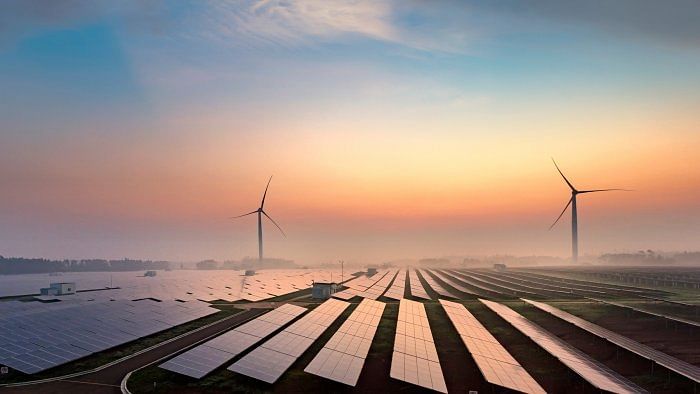
With the world realising the intensity of emissions, the global community is making concrete, consistent, and considerable efforts to achieve net zero and reduce emissions. India is also making efforts to achieve its net-zero goals by 2070 by increasing the share of non-conventional energy sources in its energy mix.
To stay on its current growth trajectory, India will need to increase its energy consumption by at least 3.6 per cent annually, which will lead India’s hydrocarbon demand to double by 2025, compelling it to import 75–85 per cent of its petroleum supply.
India is expected to take over China, the second-largest consumer of energy after the United States, by 2025. India imports nearly 84 per cent of its crude oil needs from more than
42 countries.
It has just 0.3 per cent of the world’s proven oil reserves while accounting for 4.5 per cent of global oil consumption. Country has 0.8 per cent of the world’s proven natural gas reserves, but accounts for only 1.5 per cent of global gas consumption. India’s crude requirements would be 7.2 million barrels per day by 2040. India would import around 2.3 million barrels per day in oil production by 2040. It is expected that by 2040, India’s demand for energy will account for a quarter of global energy consumption. As far as the current financial year is concerned, data from April-November (2022) provides for total imports of 1,52,772,000 metric tonnes, the total import bill of crude oil is $1,13,618 million.
India has diversified its conventional energy resources (coal, oil, and natural gas) from different countries, but the top 20 sources of India’s oil imports consistently account for over 95 per cent of India’s oil imports, and the top 10 countries accounted for over 80 per cent in the last 15 years.
Energy security has been a concern for India since the 1970s, due to the threats emanating from instability in importing countries, threats to sea lines of communication, and increased burden on the government exchequer. For example, during the 1973 Arab Oil embargo, India’s oil import bill went from under $500 million, accounting for 20 per cent of the country’s export earnings in 1973, to about $1.3 billion by 1974, around 40 per cent of its potential export earnings and twice the amount of its existing
foreign exchange reserves.
Since the 1980s, India has been making serious efforts to increase the share of non-fossil fuel sources of energy in its energy mix. Since then, successive governments have made considerable efforts to design, develop, and deploy renewable energy sources in the country. These policies resulted in the tremendous growth of renewable energy sources, and today India stands as the world’s third largest producer of renewable energy, with 40 per cent of its installed capacity coming from non-fossil fuel sources (Solar: 48.55 GW and Wind: 40.033 GW).
India has the fourth-largest wind power capacity in the world. Small hydroelectricity-producing capacity is 4.83 GW, large hydroelectricity-producing capacity is 46.51 GW (source: PIB), biopower is 10.62 GW, and nuclear is 6.78 GW. India projects its renewable capacity at 500 GW by 2030, with the aim of meeting 50 per cent of the energy requirement from renewables, reducing cumulative emissions by 1 billion tonnes by 2030, and reducing the emission intensity of GDP by 45 per cent by 2030.
Mere governmental efforts with respect to achieving energy efficiency won’t suffice to meet the goal of making India a net zero country; there is a dire need to adopt diverse policy initiatives in this regard.
A policy that could be introduced is to codify different products, ranging from industrial to household items, wherein a consumer would be able to scan the product to get details about the energy efficiency employed during the production process as well as its utility.
In this regard, having bar codes on products that could be easily scanned by consumers to validate the aspect of energy efficiency can be adopted in India as one of the steps to becoming net neutral and reducing its carbon emissions. Introducing this would involve people in the process of emission reduction, whereby they can make aware and informed choices with respect to consumption and usage of various products.
(Vinay Kumar is an assistant professor of political science, and Neha Tripathi is an assistant professor of law at MNLU-A.)